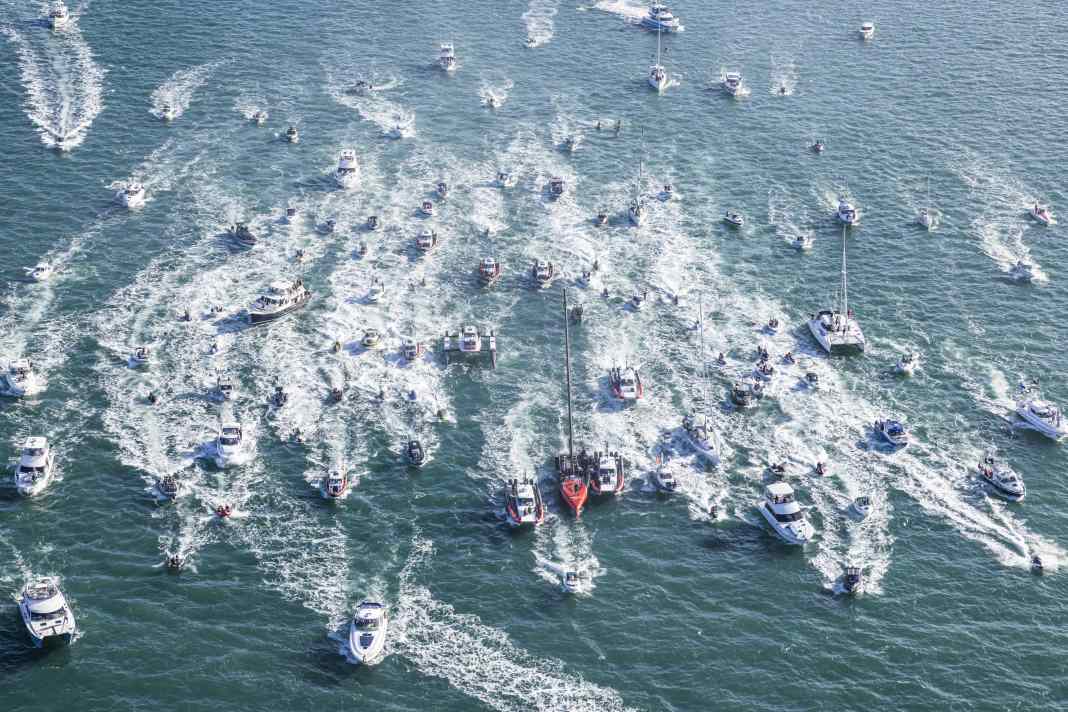





Sailing is increasingly becoming the focus of environmentalists. This time it's not about biocide-free antifouling or a ban on foils. Although the foil ban has already been applied at the Sail-GP off New Zealand because of a dolphin. This time it's about underwater noise.
Researchers from Scotland's Heriot-Watt University have investigated the noise generated by motorised spectator vessels during the 36th America's Cup in New Zealand in 2021. The study suggests that international sailing events should take measures to reduce the underwater noise they generate, as this could disturb marine wildlife.
Underwater noise affects the fauna
During the study, scientists from the Institute of Life and Earth Sciences found that the noise from large fleets of spectator boats - in some cases hundreds of motorised boats - was sufficiently loud and prolonged to potentially affect marine mammals, fish and invertebrates. These animals utilise complex hearing mechanisms for a variety of purposes including foraging, communication, reproduction, predator avoidance and orientation.
The study analysed and measured acoustic recordings around the race courses during the 36th America's Cup in the Gulf of Hauraki, New Zealand, in 2021. This edition of the America's Cup, which has been held since 1851, attracted almost 300,000 visitors.
The research was carried out by Matte Kiefer, an Honorary Research Fellow at Heriot-Watt's School of Energy, Geoscience, Infrastructure and Society. According to Kiefer, the potential impact of underwater noise from spectator boats should be considered when planning major sailing competitions, especially in environmentally sensitive areas.
He pointed out that underwater noise from motorised vessels is particularly problematic, as studies have shown that it can increase the stress levels of many marine species and reduce their success rates in reproduction, foraging and social interactions. Noise pollution can also cause some species to avoid or abandon their home ranges.
More than 1,000 boats per day
The researchers found that during the 36th America's Cup, 10,468 ships took part in the three different events, with up to 1,300 ships regularly travelling to and from the race courses each day. The increased noise level could be measured several kilometres beyond the boundaries of the race courses and remained high well beyond the duration of the race. On a typical race day, the noise level around the track between 6am and 9pm was 5 decibels higher than on a "control day" when there was no racing. This is approximately more than three times the normal sound energy level.
The protective measures taken by the organisers, such as limiting the speed of the spectator ships to 5 knots to reduce the risk of collision with marine mammals, have helped to reduce the underwater noise level, the researchers admit. However, further improvements are needed. This could include the establishment of designated areas where spectator vessels are encouraged to congregate. Marine mammal detection devices could also be used to visually or audibly recognise when animals are in the vicinity of spectators, so that best noise practices could be adopted or monitored. The public could also be encouraged to watch the events from land.
Other measures could include staggering the departure of vessels to keep spectator flotillas smaller, or giving advice to spectators on reducing the noise of their vessels, such as avoiding sudden speed changes and switching off echo sounder navigation equipment when the boat is idling.
